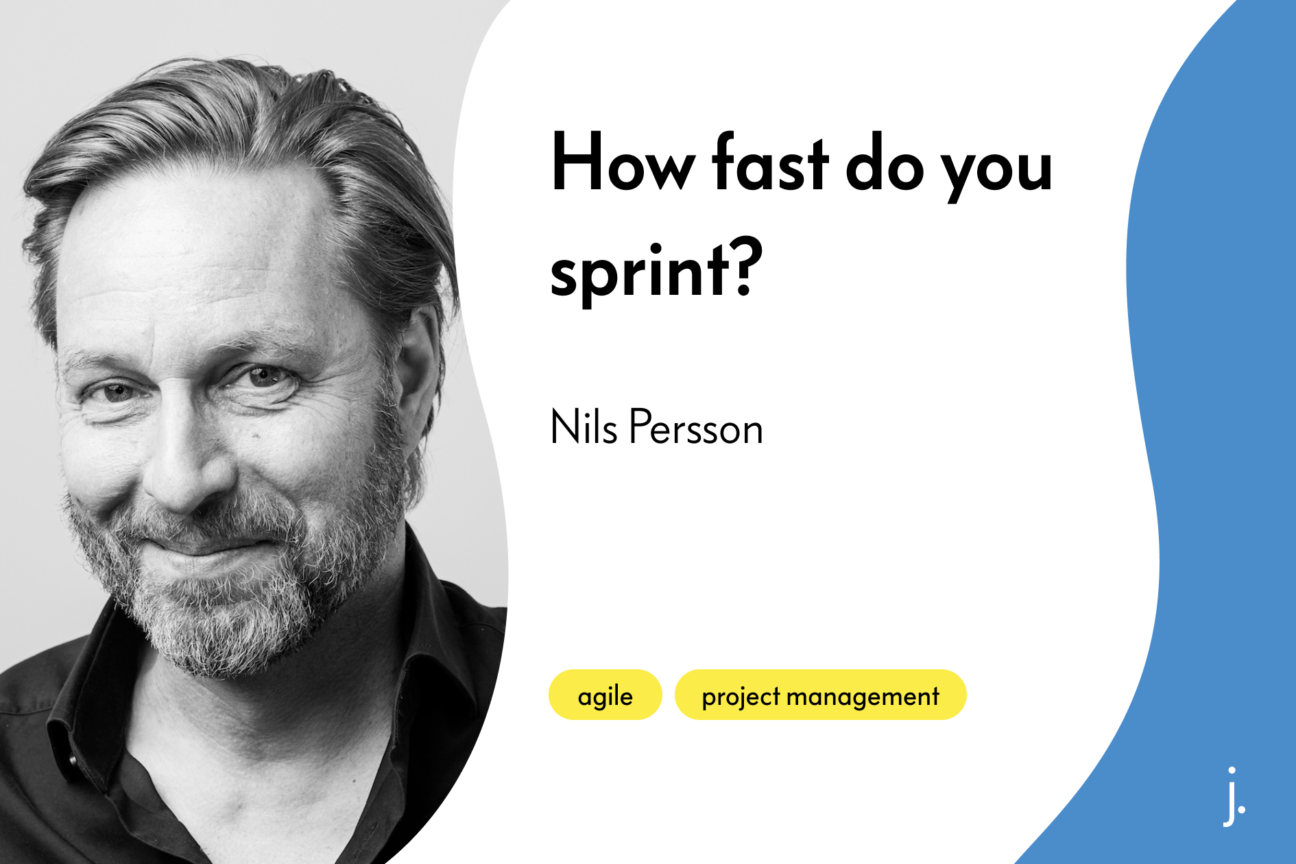(Reading time 4 min.)
In agile development, we use the word ‘sprint’ to describe the time we perform planned activities, normally between 2-4 weeks. The word ‘sprint’ is often associated with going extremely fast for a short time/distance. Going at maximum speed might work if you are in a project with only a few sprints. But in projects that run for several months (or years), you must set a pace that is possible to maintain over a long period of time. In these cases, we are far from sprinters. We are more like marathon runners.
Just like marathon runners, we need to set a pace that we can keep over a long period of time as well as “training” our teams to make this pace as high as possible. In short, there are two areas to work with.
-
Setting the right pace
-
Making sure the right pace is as high as possible
When getting those two areas right you will build endurance and long term speed in your development team. Setting the right pace seems easy enough on paper. You simply reduce the amount of work (stories) you add to the sprint. In reality, it is harder. You also need to balance customer expectations and get just the right amount of pushing effect on the team. In order to get it right, here is a couple of pointers.
For start, your team consists of individuals with different skills, strengths, and weaknesses. Make the effort to plan every sprint on an individual basis. Do not use just any developer as a benchmark for estimating the time to complete a task (and if you do, make sure the standard is not set by the fastest developer in the team). Secondly, plan with a maximum of 80% utilization. It might feel hard not to plan for full utilization for a sprint, but try reducing it for a sprint or two. You might be surprised by the results.
Increasing the pace is not as obvious as setting the right pace. However, there are several things we can address to increase performance in our development teams. In order to set up a model to work from. Let’s start with a statement:
“A team member that is motivated, happy, and finds their tasks meaningful has higher productivity.”
If we can agree on this statement, we get three areas to address:
-
Meaningfulness
-
Motivation
-
Happiness
Beautiful words indeed, but perhaps a bit fluffy and difficult to turn into specific action points. We need to break them down a bit further. It is important to remember to stay on an individual level. There is no solution that fits all, and you will not find a way to address these areas on a team level.
Is it possible to increase meaningfulness for an individual team member? Sure. Connecting the tasks performed to an understandable goal is important. This gives the tasks a purpose, and hence they become meaningful. Next, it is important for each team member to feel that the work they are doing is “good enough”. Now we move into the area of self-acceptance. Having a team where members are aware of their strengths and weaknesses comes a long way, and supporting each other to become aware is absolutely possible.
On the subject of strengths. If we know all the strengths within the team, it would be a waste not to use them. If you feel that your strengths are used in the daily work, the work becomes more meaningful.
When it comes to happiness we need to see it from a work-environment perspective. In work-context, happiness is related to respect. You need to feel respected in your team to feel happy at work. So make sure that all members of the team feel that they are seen and listened to. Simple, but hard. It should always be a red flag if you stop listening when somebody is talking. This tends to happen quite often.
To increase motivation, it is important that everybody in the team has the right level of mandate to make decisions related to their tasks. This level is different for everyone. Some team members are not comfortable making decisions, while others get motivated by having to make them while developing. Talk about this in your team. Adapt the planning of tasks to find a good fit for everyone. It is also important that you feel your competences come to good use, or that you do not lack any competence to perform your tasks. Finally, motivation is driven by relatedness. Everyone needs to feel that they belong to the team.
In order to achieve constant delivery over a long period of time, we must set the right pace for a development team. To achieve this it is important to plan on an individual level and decrease the utilization to 80%. Increasing the capability to deliver is done by improving motivation, happiness, and meaningfulness on an individual level.
The good news is that all these areas are connected and affect one another. So you can start with just one of the areas and you will see improvements in all others.
I hope you find some golden nuggets in this blog post. Stop sprinting too fast and be pleasantly surprised!
